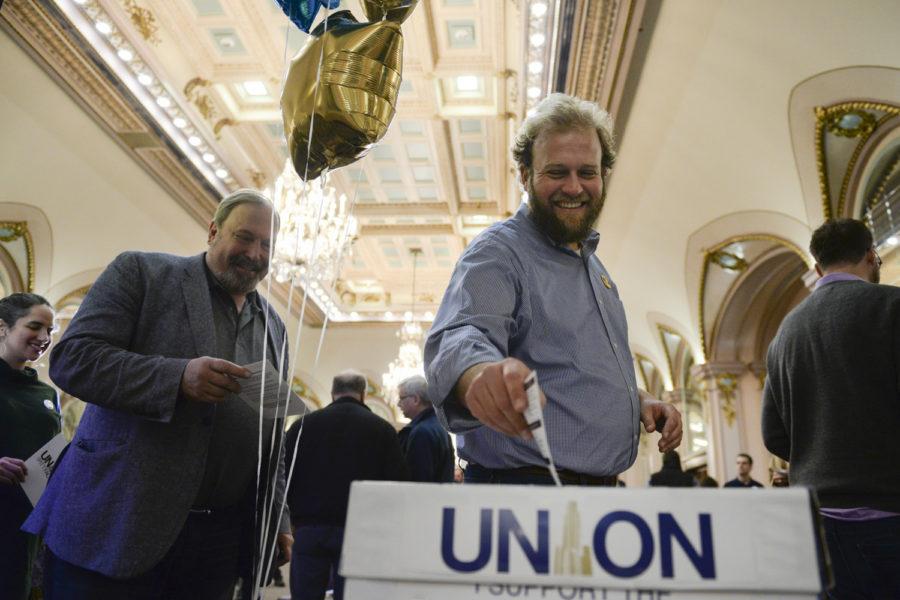Editorial | Unionization is hard-won, well-deserved for faculty
From Aug. 27 to Oct. 12, Pitt faculty and researchers voted to unionize as an affiliate of United Steelworkers’ Academic Workers Association.
October 22, 2021
The front page of the March 19, 1973 issue of The Pitt News reads, among other headlines, “Faculty Union Forming.” That union drive fizzled out in 1976 with a narrow victory for “No Representation,” and was only the beginning of on-and-off efforts by Pitt faculty to unionize.
In an election held from Aug. 27 to Oct. 12, Pitt faculty and researchers voted by a wide margin to unionize as an affiliate of United Steelworkers’ Academic Workers Association, capping off nearly half a century of efforts to redefine the faculty-administration relationship at the University.
There are technical objections to be made about the merits of the union — there’s been no shortage of those — but the bottom line is that unions are the best tool workers have to ensure fair compensation, safe and accommodating working conditions and a voice in the direction of their workplace.
A faculty union will allow professors and researchers to collectively bargain with Pitt administrators, making it easier to push for greater job security, raising faculty pay, restoring and enhancing health benefits and making sure that workloads are kept manageable.
On top of all that, Pitt administration’s response to the latest union drive is a pretty good indicator of how powerful it will be for advancing the interests of faculty. While administrators never took an official stance on their desired election outcome, they’ve hardly seemed enthused about a union. Provost Ann Cudd characterized unionization as unnecessary and ill-suited to University governance at a 2018 new faculty orientation session, and Chancellor Patrick Gallagher expressed a gentler version of this sentiment just this year. Pitt also spent more than $2 million employing a “union avoidance” law firm and produced, according to the Pennsylvania Labor Relations Board, a “factually and legally incorrect” list of union-eligible faculty that nearly nixed the current drive altogether.
The election, however, was just one of the new union’s many challenges. The union formed because of valid critiques of shared governance, namely that faculty occupied a mostly advisory role under this system. Now, they have a relatively equal seat at the table and can bargain from a position of strength.
Pitt faculty now have a position of leverage from which they can hold administration to an unprecedented degree of accountability, but that also means union leaders are accountable to their members. With the election now in the rearview mirror, it’s time to put the contrast of the union into action and deliver an acceptable contract for its roughly 3,000 members. Union leaders have acknowledged the need for a “representative and inclusive” bargaining committee and promised to bring anti-union faculty’s concerns into the fold — a promising sign.
But amid any concerns about the future, it can’t be lost on us just how historic of a moment this is — the end of decades worth of drives to give faculty the pay, benefits, working conditions and say they deserve. Without educators, a university is reduced to a collection of students and suits, learning nothing, administrating nothing. It’s not everyday that something so resoundingly positive as faculty unionization happens, but it’s always hard-won.



